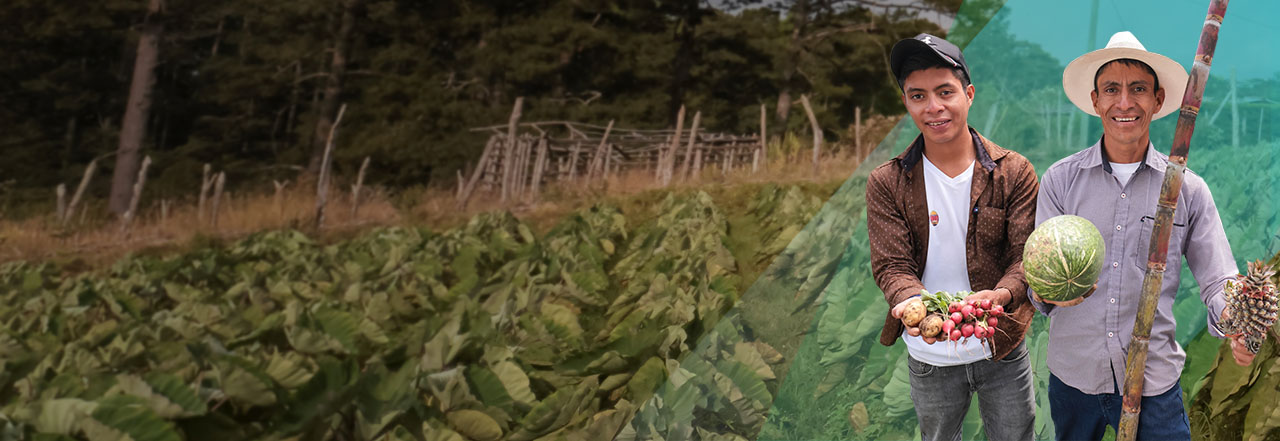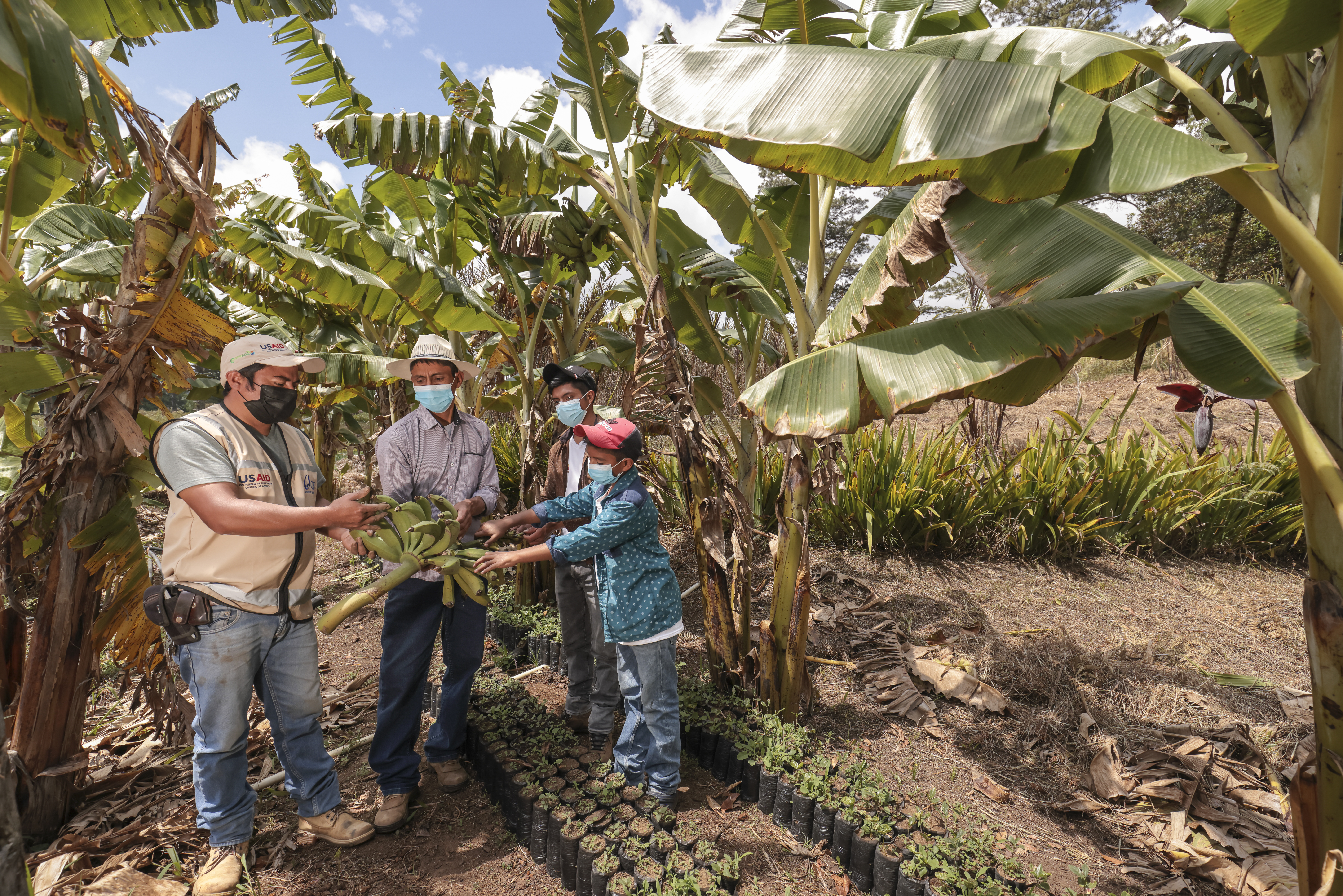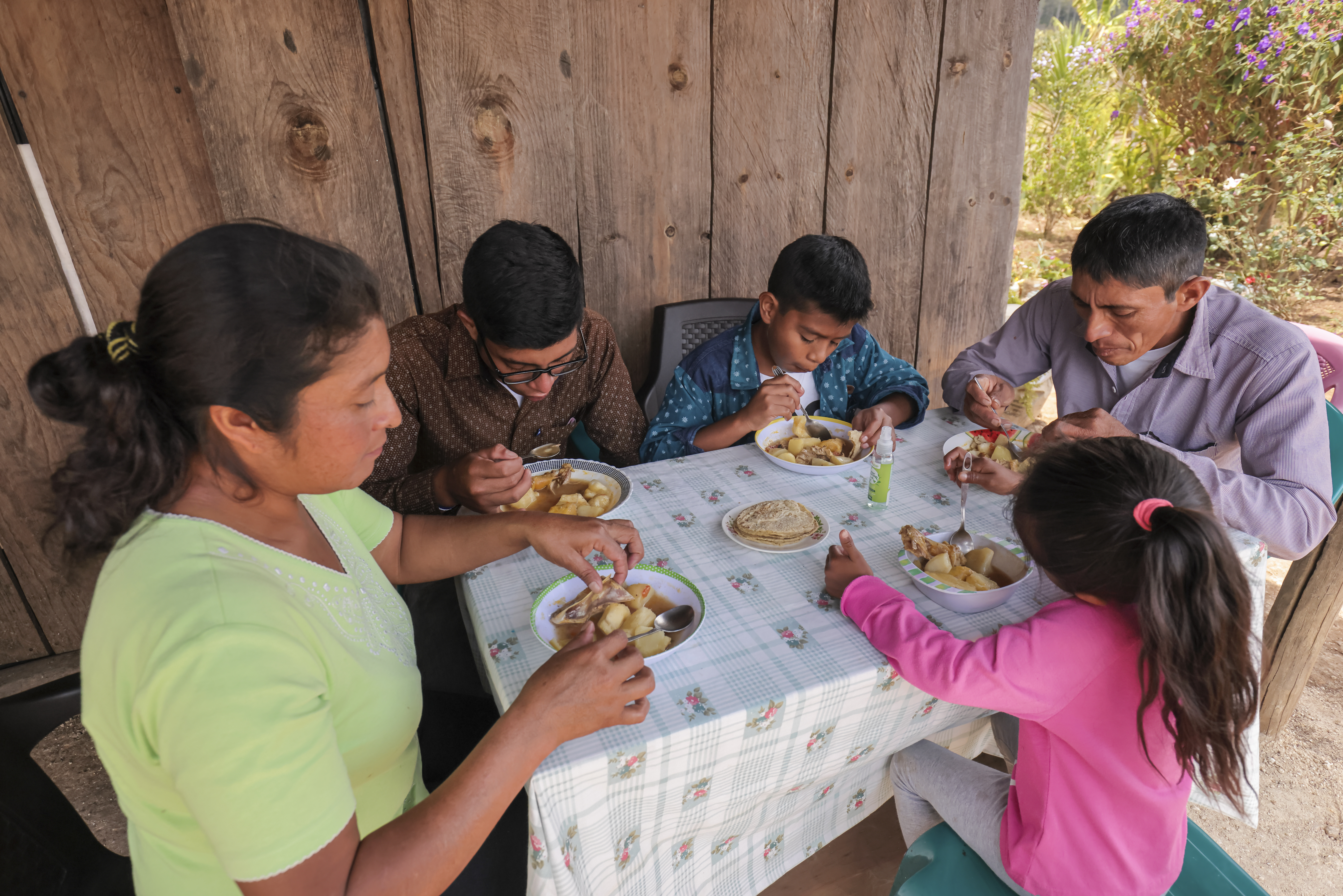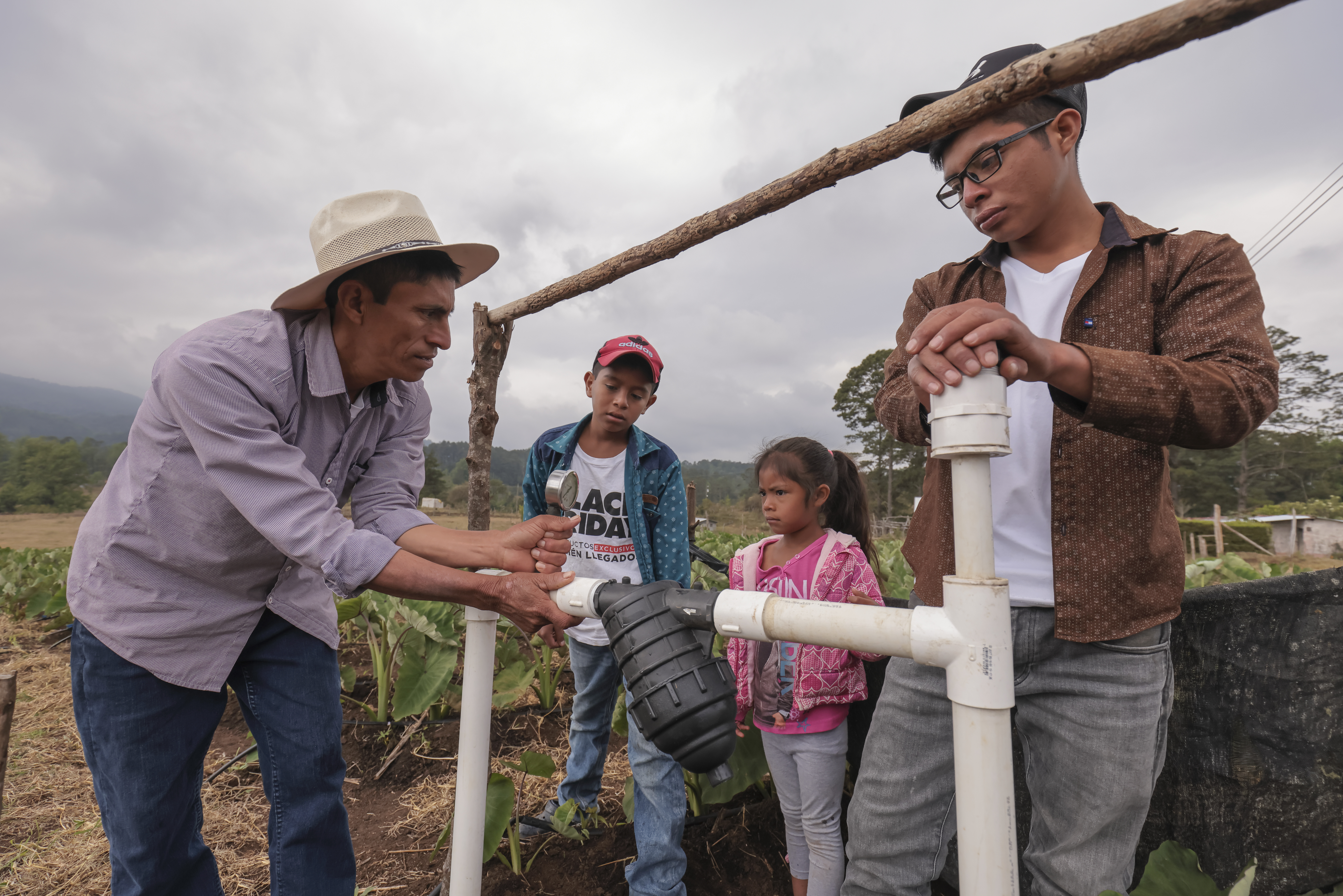

Nery’s Story: The Impact of U.S. International Assistance
It’s 7 a.m. and the sun is rising steadily higher in the sky. It’s a temperate 70 degrees as you walk across Nery García’s field in El Ciprés, in the central highlands of Honduras. The soil gives way with each step: You pick some up, and it feels soft and damp.
Nery shows you watermelons growing on a vine nearby and then hands you a freshly picked pineapple. Looking out at his farm, you see plantain and citrus trees, fields of lettuce heads and tall stalks of corn in the distance. You learn that Nery is also growing radishes, pumpkins, broccoli and an assortment of other vegetables. He is eager to take you to his taro fields, a vegetable similar to a yam.
Nery shares, “The CRS [Catholic Relief Services] technicians are helping us to get a secure market niche for the taro so that we can sell it and generate income for our families.”

A RAÍCES agriculture technician, left, Nery and his two sons check plantain production at Nery's farm. Photo by Oscar Leiva/Silverlight for CRS
Climate Change’s Impact on Farmers
After visiting this thriving farm, it’s hard to believe that only a few years ago, the Garcías experienced a serious hunger crisis. The impacts of climate change and inflation made it nearly impossible for Nery to grow the beans and corn he planted, and he lacked the resources needed to diversify his farm. Unable to grow or buy enough food for his family, he considered his limited options.
“I’ll be honest,” he says. “Before the CRS project, I thought a thousand times about emigrating.”
Nery isn’t the only smallholder farmer in Central America to consider migration. Climate change is wreaking havoc on farms across the Dry Corridor, causing thousands of people to lose their livelihoods—and forcing them to make the difficult decision to leave their homes and communities to survive.
Advocate for Solutions to Climate Change
People who leave their countries because of the impact of climate change don’t qualify for refugee status or protection under international law. But the climate emergency is dramatically increasing global displacement and migration and increasing the vulnerability of people already experiencing forced displacement, poverty, hunger and other issues.
“Thirty years ago, there was enough water in the lagoons, in the rivers, in the streams,” Nery says. “But climate change began to affect us. The lagoons and streams dried up and only the strong rivers remained. Our water sources are now farther away.”
Norma, Nery’s wife, recalls an especially tough drought year, saying, “In 2018, it didn’t rain, and the corn didn’t grow. There was no water, so the plants dried up and nothing could be harvested. It was difficult for all our community.”

Norma, Nery and three of their children eat lunch together prepared with vegetables from their farm. Photo by Oscar Leiva/Silverlight for CRS
In addition to longer periods of drought and unpredictable, destructive rains that cause flooding, Nery faced other challenges. The supplies he needs to farm—seeds, fertilizer, equipment—have become more expensive, making it harder to break even. His irrigation system was also inefficient: It caused erosion, damaged his plants and washed away his insecticide.
Adapting to Climate Change with RAÍCES
Determined to support his family and make his farm profitable, Nery joined the CRS’ RAÍCES project. The program—funded by U.S. international humanitarian and development assistance—helps farmers across Central America adapt to climate change.
Nery worked with CRS staff and community members to construct a water reservoir for the entire community. He replaced his sprinkler irrigation system with a drip irrigation system that uses only the amount of water that the crops need. Additionally, the new system doesn’t damage his plants or cause runoff.
“Before we only planted in winter when the rain fell from the sky,” Nery says. “Now that the entire structure of the irrigation system was remodeled with the RAÍCES project through CRS, it has been a great advantage. One hundred percent of the project producers are already cultivating.”

Nery and three of his children examine the drip irrigation system in one of their taro fields. Photo by Oscar Leiva/Silverlight for CRS
Nery learned how to improve his soil health. By using cover crops and live barriers—such as his pineapple plants—he conserves moisture in the soil during droughts and prevents erosion.
With the foundation of a healthy farm that can withstand the consequences of climate change, Nery could expand his production. He began planting additional fruits and vegetables that would provide nutritious food for his family and that he could sell at the market to earn income.
“Before it was very difficult,” Norma says. “We had to go shopping, and if there was no money we suffered. We have made good progress as a family because we have planted a little of everything to meet our needs at home.”
Norma says she is happy to see her children healthy. They are thriving in school and help her and Nery with the farm. And Nery—who now tries to help other farmers in his community—says he is thankful he was given the opportunity to provide for his family and community.
“Emigrating no longer crosses my mind,” Nery says. “In this time that CRS has come and given me a hand, I know I can succeed. … I dream that my family can be an example, that we can be the link and a resource for other families here in Honduras.”
U.S. international development and humanitarian assistance funds RAÍCES and other programs that help communities around the world that are vulnerable to climate change and hunger. Urge your members of Congress to address the impacts of climate change by providing robust funding for poverty-reducing international assistance programs in the federal budget, especially within the Green Climate Fund and Development Assistance.

